-
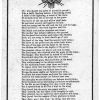 +10 +3
+10 +3“Fugitive Verses”: The Circulation of Poems in Nineteenth-Century American Newspapers
Mapping Networks of Reprinting in 19th-Century Newspapers and Magazines
-
 +4 +2
+4 +2The Daniel Boulud Course on Food and Life
GQ’s veggie-averse Style Guy goes to cooking school with legendary French chef Daniel Boulud. By Mark Anthony Green.
-
 +40 +7
+40 +7Renting hell in New York City: how my hoarder landlady ruined my life
Steven W Thrasher paid $1,000 a month for a Brooklyn renter’s dream – a sprawling apartment on a beautiful tree-lined block – that was too good to be true.
-
 +37 +7
+37 +7A Maddening Sound
Is the Hum, a mysterious noise heard around the world, science or mass delusion? By Colin Dickey.
-
 +10 +1
+10 +1Why Are America’s Most Innovative Companies Still Stuck in 1950s Suburbia?
When Apple finishes its new $5 billion headquarters in Cupertino, California, the technorati will ooh and ahh over its otherworldly architecture, patting themselves on the back for yet another example of “innovation.” Countless employees, tech bloggers, and design fanatics are already lauding the “futuristic” building and its many “groundbreaking” features. But few are aware that Apple’s monumental project is already outdated, mimicking a half-century of stagnant...
-
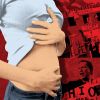 +33 +7
+33 +7The War on Planned Parenthood
“As an American woman, I currently have less reproductive autonomy than I would have had the day I was born.” Inside the Republican stealth campaign to dismantle women’s reproductive rights. By Alex Morris.
-
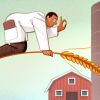 +25 +4
+25 +4CRISPR Is Going To Revolutionize Our Food System—And Start A New War Over GMOs
In five years, there might be a little CRISPR-edited corn in your breakfast cereal or CRISPR-edited wheat in your pasta. CRISPR'd tomatoes and CRISPR'd pork might follow. There's already a little CRISPR in your yogurt. It's not hyperbolic to say that CRISPR-Cas9—new technology that makes it possible to quickly and easily edit DNA—is changing the future of food. The method could eventually be used to tweak almost anything we eat, selecting traits that can make agriculture more environmentally...
-
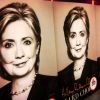 +48 +9
+48 +9The One Piece of Writing Every Hillary Supporter Should Read
Before you turn away from these words in frustration, thinking the last thing you need to read is another anti-Hillary rant, allow yourself to play devil’s advocate for just a couple of minutes longer. After all, if Hillary is the wiser choice, then nothing you can read below will change that irrevocable fact.
-
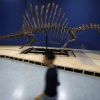 +33 +10
+33 +10The Spinosaurus is a Dinosaur-Sized Mystery
Two years after a controversial paper claimed to reconstruct the carnivorous beast, it remains one of the most enigmatic puzzles of paleontology.
-
 +36 +14
+36 +14Harvard and the Making of the Unabomber
In the fall of 1958 Theodore Kaczynski, a brilliant but vulnerable boy of sixteen, entered Harvard College. There he encountered a prevailing intellectual atmosphere of anti-technological despair. There, also, he was deceived into subjecting himself to a series of purposely brutalizing psychological experiments -- experiments that may have confirmed his still-forming belief in the evil of science. Was the Unabomber born at Harvard? A look inside the files. By Alston Chase. (June ’00)
-
 +33 +11
+33 +11Inside Big Pharma's Campaign To Put Us All To Sleep
One evening in the late summer of 2015, Lisa Schwartz was watching television at her Vermont home when an ad for a sleeping pill called Belsomra appeared on the screen. Schwartz, a longtime professor at Dartmouth Medical College, usually muted commercials, but she watched this one closely: a 90-second spot featuring a young woman and two slightly cute, slightly creepy fuzzy animals in the shape of the words “sleep” and “wake.”
-
 +28 +5
+28 +5Johnson & Johnson Has a Baby Powder Problem
Jacqueline Fox worked in restaurant kitchens and school cafeterias, cleaned people’s houses, watched their kids, raised a son, and took in two foster children. She was careful about her appearance and liked to tend the garden in front of her home in Birmingham, Alabama. She had been treated for high blood pressure, arthritis, and diabetes, but, at 59, she was feeling pretty good. In the spring of 2013, her poodle, Dexter...
-
 +30 +11
+30 +11Chapter Five: Knocking on the psychic's door
Even after all the discoveries we made in our search for answers about the mysterious French psychic Maria Duval, we still need to solve the mystery of this woman and confront her face-to-face. This time, we go to France.
-
 +35 +13
+35 +13Coyote Bros: How Hard-Partying College Kids Became Illegal Alien Smugglers
Stephen Sluyter was lounging on his leather couch, taking bong hits and watching the Cartoon Network, when his phone rang. "Bro, you hungry?" his best friend and roommate Max Bocanegra asked on the other end of the line. "I got some beans for you. I need you to get them right now." Sluyter was a 28-year-old graduate student at Texas A&M – Corpus Christi, and founder of its Kappa Sigma fraternity chapter, famous for the slip-and-slide parties and oil-wrestling events...
-
 +23 +5
+23 +5The World’s Most Powerful Corporation
The East India Company was vast and powerful, hiring thousands across the world. But what was it like to work there? And are there parallels with today’s multinationals?
-
 +22 +6
+22 +6The Cracks Ripping Earth Apart
In a remote and desolate landscape, the rocks are tearing themselves in two beneath your feet and new land is being born
-
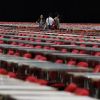 +22 +6
+22 +6Security failures leave SAT scores in question
Leaks of the SAT have been far more pervasive than acknowledged, documents show. The new SAT is vulnerable to a security hole that's widely exploited in Asia.
-
 +3 +2
+3 +2The Departed
Princetonian, Olympian, Financier, Fugitive. By Kip McDaniel.
-
 +20 +4
+20 +4The Longest Night
One Easter Sunday, the Alaska Ranger — a fishing boat out of Dutch Harbor — went down in the Bering Sea, 6,000 feet deep and thirty-two degrees cold. Forty-seven people were on board, and nearly half of them would spend hours floating alone in the darkness, in water so frigid it can kill a man in minutes. Forty-two of them would be rescued. Here’s how. By Sean Flynn. (Oct. ’08)
-
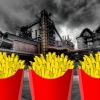 +43 +9
+43 +9The Food Industrial Complex
In 2011, during a debate over the nutritional guidelines for school lunches, Congress decided that pizza counts as a vegetable. And not for the first time. The American government first proposed that an unhealthy food—if it contains trace amounts of a healthy ingredient—could count as a vegetable in 1981. Looking for ways to cut the school lunch budget, the Reagan Administration suggested that cafeterias include ingredients...
Submit a link
Start a discussion




















